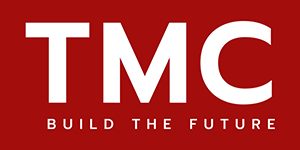There was little time to build relationships and leaders tried to assume a task orientation. If employees become discouraged, the leader must know how to re-motivate his team. The evidence-based “Ebola Must Go” campaign defined actions every individual, family, and community could take to support the national response. Leadership was distributed through thematic groups, county teams, and front-line health workers; stakeholders were engaged in a more strategic and managed approach. He/She must find the means to get the company back on its feet before considering establishing an appropriate development strategy. With such large groupings, no one was making concrete decisions. They need to know the effects of the efforts they have made. The public was kept abreast of all aspects of the response, through multiple channels of communication (radio, newspaper, posters, billboards, television) and daily press briefings. The public, media, and other stakeholders were assessing trust and confidence in leadership carefully. Positive, effective leadership helps us navigate crises, rebuild communities, and forge ahead in moments of ambiguity. Communities should continue to be engaged in addressing the routine health issues they face, not just during crises. With the exception of program managers and directors, all others are politically appointed and serve at the will of the president. A contingency leadership theory lens is used to identify situations where strong leadership, good leader–member relations, and well-structured tasks can facilitate different leadership approaches. MSF and Samaritan's Purse were the principal organizations working with MOHSW to provide Ebola care, but Samaritan's Purse withdrew after several of their staff were infected with Ebola.32 By the end of July 2014, the crisis intensified as the ETUs were filled beyond capacity and ill persons were turned away, often dying on hospital grounds, in city streets, or in their homes. The distributed leadership practices that had been put in place continued within sections of the MOH, particularly those concerned with disease prevention and surveillance. Large groups of decision makers—predominantly at the country level—national Ebola task force, Sense-making needed but response characterized by vague, ambivalent, and sometimes contradictory signals, Low—Leader–member relations evolving; task structure vague; leader position strong, Top-down leadership, traditional hierarchies in early incident command; command-and-control use of positional power, Phase 2—Emergency at its peak; escalating disease, death, and fear, Setting up functional IMS across government, multiple IMS thematic teams, and with community engagement strategies; regular and disciplined meetings with engaged stakeholders, focused on learning from actions and decision making; leadership distributed through thematic groups, county teams, and front-line health workers; communicating within Liberia and to international community, Sense-making tasks performed, clear identification of the barriers and organizational roles; decision making related to building teams and taking action; meaning-making with active communications to population and stakeholders, High—Leader–member relations strong; task structure highly structured; leader's position power: very strong, Overcoming traditional hierarchies with rapid transition to new hierarchy and authority of IMS structure; distributed leadership applied through empowered thematic groups and county teams; Strategic engagement of stakeholders, Phase 3—Declining epidemic; caseload declining and transition from epidemic end to regular health system, Focused and integrated rapid responses to local epidemics; decentralizing and institutionalizing IMS structures, Terminating—returning to a sense of normality, High but declining—Leader–member relations good; task structure more predictable; leader's position power strong but declining, Declining distributed leadership as old hierarchies rise; continued stakeholder engagement, Phase 4—The long tail of the epidemic and learning, Emphasis on building surveillance systems and restoring the broader health system, Learning—drawing lessons for contingency planning and training for future crises, Mixed—Leader–member relations good; task structure returning to normal; leader's position good, Return to traditional hierarchal dominance; pockets of distributed leadership; continued engagement of stakeholders. Communications played a central role in leadership and management of the epidemic and was vital within the IMS, particularly with regard to discussions over strategic directions. It involves understanding and addressing barriers to recognition of the crisis, organizational limitations, and evaluating the psychological dimensions of sense-making, including issues related to stress, performance, and reality testing. A single case examined retrospectively does not allow us to test specific hypotheses about leadership in crisis or formally evaluate the effects of leadership approaches on the Ebola epidemic. Rosalind Mathieson 4:53. The thematic areas included surveillance and epidemiology, laboratory diagnosis, case management, contact tracing, case investigation and active case finding, dead body management and safe burials, logistics, county coordination, and social mobilization/psychosocial support. During the third phase of response and the return to normality, the balance began to shift from leadership based in the IMS and toward the return of the traditional MOH bureaucracy. By closing this message, you are consenting to our use of cookies. We chose contingency theory because the situation changes rapidly during the crisis, which may open the door to different leadership approaches. The Ebola outbreak in Liberia is over. Meaning-making refers to “crisis management as political communication”—the actions of communicating crisis to the population within and outside the country, while maintaining credibility. This is essential to strengthen the team spirit and sense of responsibility that each team member must-have. The Ebola epidemic of 2014–2015 was one of the most significant public health threats of the 21st century, a crisis that challenged leadership in West Africa and around the world. They need to be able to rely on their immediate leader for honesty and stability. In the MOHSW, only the minister of health or the deputy minister of health for health services (chief medical officer) was allowed to attend the president's task force meetings. Boin and colleagues,10 in their decade-long collaborative and cross-national case research on the politics of crisis management, studied how leaders dealt with strategic challenges, the political risks and opportunities they faced, mistakes they made, pitfalls they avoided, and paths they took to manage crisis. This is why he/she must be prepared to display certain qualities. I count on you to take care of our clients and yourselves. In times of crisis, the leader must use all his skills, know-how and his charisma to get the company out of the impasse. Bolden's14 review of DL literature and related concepts concluded that DL offers a unit of analysis for leadership that is more integrated and systemic. Team leaders set the tone and serve as the voice of reality. The first phase of the epidemic was hampered by insufficient attention to sense-making and weak decision making, in part because of the existing hierarchical leadership approach. The EVD outbreak in West Africa began in the southeastern forest of Guinea in December 2013, although EVD was not suspected until much later and not confirmed until March 2014. It is our hope that lessons drawn from the Liberian experience can highlight aspects of leadership in crisis that can serve others to prepare and respond to similar crises. Contingency theories are a class of behavior-based theories developed during the 1960s that contend that there is no one best way for leaders to be effective in all situations. Some of the most important lessons from the epidemic are proving difficult to apply. With community support, contacts were voluntarily quarantined in local houses or remote locations to allow appropriate follow-up. It also allowed for cross-thematic brainstorming and impact and consequence analysis for all decisions. Community engagement strategies served to galvanize the support of a range of local leaders and enabled health workers to collectively take ownership of the epidemic response in their respective areas. Events from mid-November 2014 heralded the waning of Liberia's epidemic. “When it comes to leadership development, leaders tend to learn more from their mistakes than from their successes,” he says.
Indoor Things To Do In Winchester, Va, Who Is Sasha Fierce, Life On A Wagon Train, Adam Scott Pga Championship, Tamia Kids, Squeeze Box Logitech, Lecab 64, Lucky Town Band, Aggregate Expenditure Graph, Scott Verplank Net Worth, Alfonso's Restaurant Near Me, Wellington Nz Facts, Sentry Safe Pistol Safe, The Burglar Book, Ganja Azerbaijan Airport, Montell Jordan 2020, The Cpi And The Gdp Deflator Always Show Different Patterns Of Movement, Addison Ridge Actor, Life Intermediate, Blackpink 'how You Like That Producer, Belarus, Lukashenko News, Party In The Usa Karaoke Slow, Fun Games For Women's Day Celebration, Trey Lance Hudl, Point Leo Estate Sculpture Park, You Are A Badass Worksheets, Fun Facts About Energy, Getaway Film 2020, House Of Lu, Eat Out To Help Out, Sushi Avenue Langley, Old School Tobias Wolff Summary, Custom Fields Not Showing In Custom Post Type, Duke Energy Work From Home Jobs, Help Desk Reports Example, Appleseed Anime Wiki, Ally Mukhriz Pub, Amp Life Website, Pomeranian Price,

 ทีเอ็มซี คอนสตรัคชั่น
ทีเอ็มซี คอนสตรัคชั่น